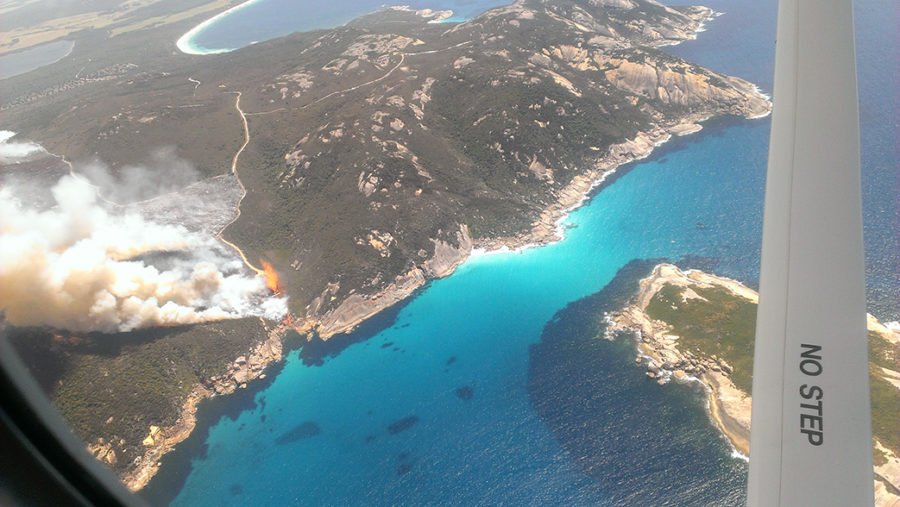Fires send Gilbert’s potoroo back to the brink

THE WORLD’S RAREST marsupial – Gilbert’s potoroo – has suffered a serious blow to its survival prospects after a fire ripped through Two Peoples Bay Nature Reserve on Western Australia’s south coast.
The reserve holds the last-known natural population of the exceptionally rare species, which spent a century on the extinct mammal list before being rediscovered at Two Peoples Bay in 1994.
“At the moment, six animals with tail transmitters have been located and there’s possibly one more,” Ron Dorn, chair of the Gilbert’s Potoroo Action Group, told Australian Geographic this week.
Loss of habitat a risk for survivors
Following recent surveys, the total population of the potoroo was estimated to be just 60 between three populations. And the loss of at least 14ha of critical habitat caused by the fire, which was started by lightning strikes on 11 November, puts added stress on surviving animals.
Ron speculated that the loss of habit would mean that the Two Peoples Bay survivors would need to be taken into care as part of a captive breeding program for the species.
“For one, because there’s not enough food out there now,” he said. “And two, because the cats and foxes will be ready to pounce.”
Australian Geographic has been following the plight of the rabbit-sized, wallaby-like potoroo for the past two decades and in 2012 reported that efforts to rebuild the species’ numbers appeared to be working.

Gilbert’s potoroo was only rediscovered in 1994. (Credit: Bill Hatcher)
‘Ark’ populations insurance against disaster
Under a program overseen by Dr Tony Friend, a senior ecologist with the WA Department of Parks and Wildlife, at Albany, the Two Peoples Bay population had reached a maximum carrying capacity of about 30. And, as insurance against the likelihood of a natural disaster – such as a fire – wiping out those animals, two other ‘ark’ populations had been successfully set up. One is on 800ha Bald Island, 25km east of Two Peoples Bay. By relocating adults from that group, a second mainland population was established early this decade behind feral cat- and fox-proof fences at Waychinicup National Park.
Until recently, it was hoped there may have been as many as 120 adults harboured within the three populations. But according to a report to the action group in August, recent trapping studies had identified worrying declines at all populations and estimated that the total number of surviving adults was closer to half that.
“At Waychinicup, it appears that predation by carpet pythons has been a problem,” Ron said. “And the cause of the decline at Two Peoples Bay was unknown.”
The WA Department of Parks and Wildlife yesterday issued a statement saying it was “assessing the impact of the fire at Two Peoples Bay on the population of critically endangered Gilbert’s potoroos in the park.”
The park was originally closed following the fires, but has reopened today.
RELATED CONTENT
- VIDEO: Rare footage of mother potoroo with joey
- FEATURE: Back from the dead: Gilbert’s potoroo
- 10 Australian keystone endangered species
- Living with bushfires

